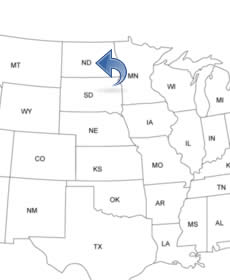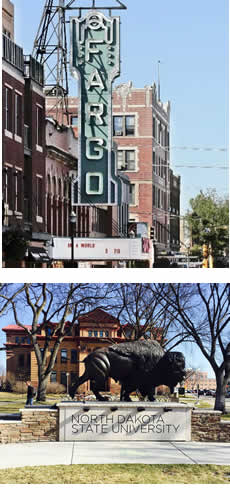NORTH DAKOTA PEOPLE SEARCH!
- ✔ Contact Info
- ✔ Phone Numbers
- ✔ Criminal Records
- ✔ Income Info
- ✔ Neighbors
- ✔ People's Age
- ✔ Property Ownership
- ✔ And Much More
Fargo, North Dakota
Fargo is located in the eastern part and is the largest city in the U.S. State of North Dakota. Fargo is ranked among the top 10 best small cities in the nation to start a business or a career in. Several businesses have major operations in the community including Microsoft, Nokia and Cetero Research. Many people relate Fargo to the Coen Brothers movie Fargo from 1996, but none of the movies was filmed in Fargo. Most of the people's forefathers in the city came from Sweden, Norway, Germany, Ireland, and England. Fargo has been selected as an All-America City two times.
To See And To Do In Fargo
- The Plains Art Museum
- Fargo Theatre
- Children's Museum
- The Courthouse Museum
- The Roger Maris Museum
- Red River Zoo
- FargoDome
- Celebrity Walk of Fame
- The Fargo Air Museum
- West Acres Shopping Center
- Golf
History Of Fargo - Timeline
In 1858, an expedition was sent to explore the area and look for a northern railroad route to the Pacific. It is the first known documented exploration of Fargo. In 1869, several families settled in present-day Fargo and the first railroad was completed the same year. In 1870, Fargo was a stopping point for steamboats floating down the Red River.
In 1871, Fargo was founded and it grew rapidly as more and more settlers arrived, drawn by the promise of cheap, fertile farmland. In 1872, the telegraph line was extended from Fargo to Winnipeg. Also in 1872, the Headquarters Hotel was completed and the Northern Pacific Railroad bridge across the Red River was completed.
In 1874, the first church built in Fargo and the Fargo Express newspaper was published. In 1877, the first bank opened. In 1879, a horse-drawn streetcar line was established. In 1881, the first telephones were installed in peoples homes. In 1882, the first hospital opened.
In 1883, electric lights were installed in Fargo. In 1890, the North Dakota State Agricultural College was founded. In 1892, there were more than 8,000 people living in the town. In 1893, a fire destroyed most of the business section of the city.
In 1900. the Fargo Public Library was established. In 1904, a streetcar system that was electric was established. In 1922, the radio station WDAY began broadcasting. In 1926, the Fargo Theatre was built.
In 1957, a tornado killed 10 people and over 100 were injured. The tornado destroyed over 300 homes and damaged another 1000. Four churches, three schools, and at least 15 commercial buildings were damaged. In 1961, Roger Maris from Fargo broke Babe Ruth's single-season home run record. In 1992, an indoor athletic stadium, the Fargodome, opens.

